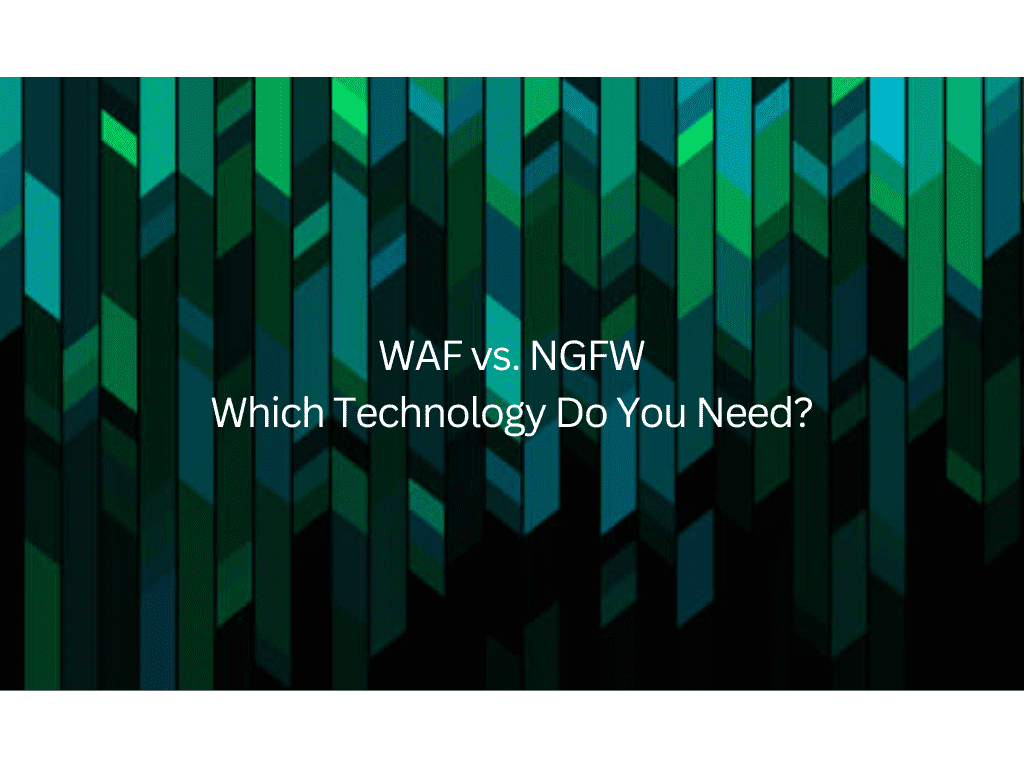Web Application Firewall (WAF) and Next-Generation Firewall (NGFW) are two popular technologies used in modern cybersecurity to protect networks and applications from various cyber threats. While both serve the purpose of enhancing security, they have distinct features and use cases that make them suitable for different scenarios. In this article, we will compare WAF and NGFW to help you understand which technology you may need for your organization.
Web Application Firewall (WAF)
A Web Application Firewall (WAF) is a specialized security solution designed to protect web applications from cyber attacks. It operates at the application layer of the OSI model, which allows it to analyze HTTP and HTTPS traffic to detect and block malicious activities. WAFs are typically deployed in front of web servers or as part of a load balancing setup, and they can be either hardware-based or software-based.
WAFs are specifically designed to defend against threats that target web applications, such as cross-site scripting (XSS), SQL injection, and other application-layer attacks. They use various techniques, such as signature-based and behavior-based detection, to identify and block suspicious or malicious traffic. WAFs also provide features like content filtering, URL filtering, and authentication, which allow organizations to enforce security policies and protect against data breaches.
Next-Generation Firewall (NGFW)
A Next-Generation Firewall (NGFW) is a more advanced version of traditional firewalls that incorporates additional features beyond the capabilities of standard firewalls. NGFWs operate at the network layer (Layer 3) and the application layer (Layer 7) of the OSI model, which enables them to analyze both network and application traffic. NGFWs combine the functionality of a traditional firewall with other security features, such as intrusion prevention system (IPS), antivirus, virtual private network (VPN), and more.
NGFWs are designed to provide a comprehensive security solution that protects against a wide range of threats, including network-based attacks, application-layer attacks, and malware. They use advanced techniques, such as deep packet inspection (DPI), to inspect traffic at a granular level and identify potential threats. NGFWs also offer more advanced security policies, including user-based policies, application-based policies, and time-based policies, which provide organizations with greater flexibility and control over their security settings.
WAF vs. NGFW: Key Differences
1. Focus: WAFs are primarily focused on protecting web applications, whereas NGFWs provide broader network security capabilities.
2. Layer of Operation: WAFs operate at the application layer, while NGFWs operate at both the network and application layers.
3. Detection Techniques: WAFs primarily use signature-based and behavior-based detection techniques to identify web application attacks, while NGFWs use a combination of techniques, including DPI, IPS, antivirus, and more, to detect a wide range of network-based and application-layer attacks.
4. Granularity: WAFs offer more granular control over web application traffic, allowing organizations to enforce security policies at the application level, whereas NGFWs provide broader security policies that apply to the entire network.
5. Deployment: WAFs are typically deployed in front of web servers or as part of a load balancing setup, while NGFWs are typically deployed at the edge of the network to protect the entire network perimeter.
Which Technology Do You Need?
Deciding whether you need a WAF or NGFW depends on your organization’s specific requirements and security objectives. If your organization’s primary focus is on protecting web applications from application-layer attacks, then a WAF may be the right choice. WAFs are highly effective in detecting and blocking threats that target web applications, and they provide granular control over web traffic, making them suitable for organizations with critical web applications and a high risk of web-based attacks.
On the other hand, if your organization needs a comprehensive network security solution that provides protection against a wide range of threats, including both network-based and application-layer attacks, then an NGFW may be more appropriate. NGFWs offer a broader set of security features, such as IPS, antivirus, and VPN, which can help safeguard the entire network perimeter and provide a holistic approach to network security.
It’s also important to consider the size and complexity of your organization’s IT environment. WAFs are typically used for specific web applications, whereas NGFWs are designed to protect the entire network. If your organization has a large and complex IT infrastructure with multiple applications and services, an NGFW may be a more suitable choice as it can provide unified security policies and centralized management across the network.
Another factor to consider is your organization’s security budget. WAFs are generally more focused and specialized, and they may be more cost-effective for organizations that have limited resources or specific security requirements related to web applications. On the other hand, NGFWs are more comprehensive in their capabilities and may require a larger budget due to their broader set of features and functionalities.
In conclusion, both WAFs and NGFWs are valuable security technologies that can enhance your organization’s cybersecurity posture. The choice between them depends on your organization’s specific needs, security objectives, IT environment, and budget. If your organization’s primary concern is protecting web applications from application-layer attacks, a WAF may be the ideal choice. However, if you need a broader network security solution that can protect against a wide range of threats, an NGFW may be more suitable. It’s essential to thoroughly evaluate your organization’s requirements and consult with security experts to determine the best technology for your specific needs.
In summary, understanding the key differences between WAFs and NGFWs is crucial in determining which technology your organization needs. WAFs are specialized in protecting web applications from application-layer attacks, while NGFWs provide a comprehensive network security solution with a broader set of features. Consider your organization’s specific requirements, security objectives, IT environment, and budget to make an informed decision and ensure that your organization’s cybersecurity strategy is robust and effective.




